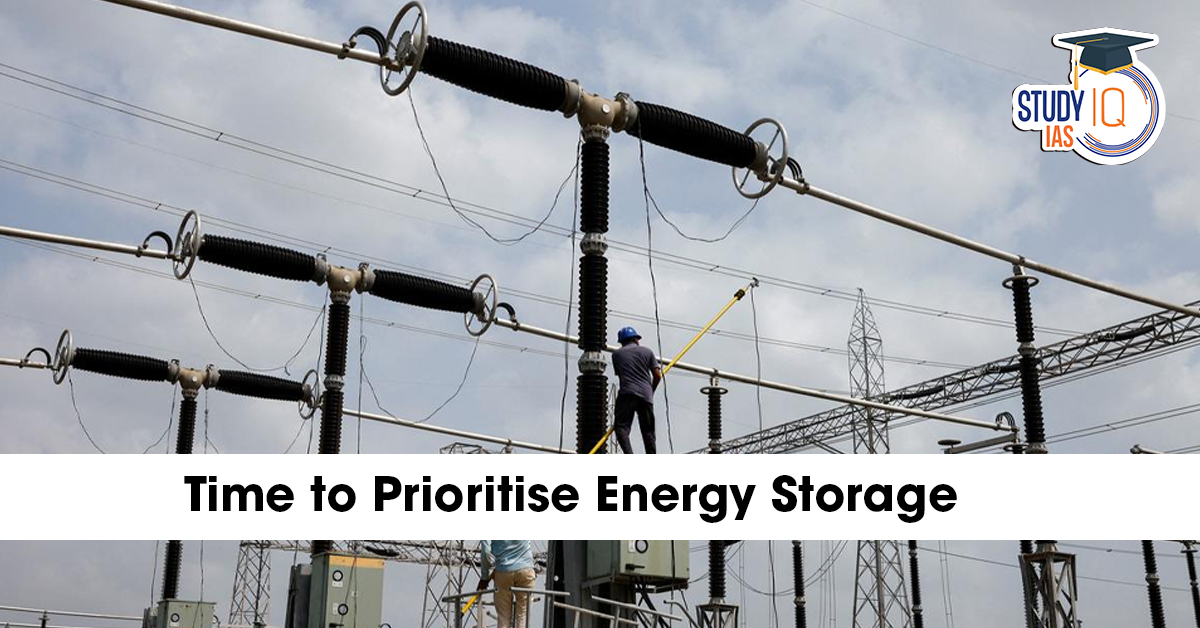Table of Contents
Context
India’s shift to renewable energy is gaining pace, but managing intermittency and peak demand remains a challenge. Recent developments in Andhra Pradesh and debates on power swapping have renewed focus on energy banking and storage as key to India’s clean energy strategy.
Understanding Power Swapping
- Power swapping refers to an agreement between two States or utilities to exchange electricity to manage fluctuations in supply and demand.
- A State with surplus electricity during a particular season or time of day supplies power to another State facing a shortage.
- Later, the process is reversed when the first State faces high demand.
- This mechanism allows both to save on high-cost short-term purchases and ensure supply stability.
- Advantages:
- Helps States avoid purchasing expensive electricity from spot markets.
- Improves utilization of idle power generation capacity.
- Enables short-term balancing of demand and supply.
- Limitations:
- Transmission Costs and Losses: Inter-State power transfers attract transmission charges and energy losses, reducing cost efficiency.
- Short-Term Fix: It addresses temporary supply gaps but does not solve long-term grid stability or renewable intermittency.
- Dependence on Other States: Swapping relies on another State’s surplus availability, which may not always coincide.
- No Support for Renewable Storage: It doesn’t address the surplus solar or wind energy that goes unutilized during off-peak hours.
Thus, while power swapping can help States manage seasonal electricity fluctuations, it cannot be the foundation of India’s clean energy strategy.
Energy Banking: The Sustainable Alternative
- Energy banking allows renewable energy producers to store surplus electricity in the grid or in a storage system for withdrawal during deficit periods.
- It acts as a financial and operational mechanism that:
- Stabilizes the grid against renewable fluctuations,
- Enables producers to earn better returns by selling power during peak demand, and
- Reduces wastage of green energy.
- Mechanism:
- During high generation (e.g., daytime solar surplus), electricity is “banked” with the grid.
- It is then withdrawn at night or during peak hours when renewable generation drops.
- States or Discoms can monetize this by trading banked energy under capacity trading models.
- Key Technologies:
- Battery Energy Storage Systems (BESS) – lithium-ion and emerging sodium-ion batteries.
- Pumped Hydro Energy Storage (PHES) – uses surplus energy to pump water uphill, releasing it to generate power later.
- Thermal Storage Systems – store heat energy for use in power or industrial processes.
- Compressed Air Energy Storage (CAES) – stores energy by compressing air in underground reservoirs.
- Why Energy Storage is Crucial:
- Renewable sources like solar and wind are intermittent – they generate power when sunlight or wind is available, not necessarily when demand peaks.
- Storage allows this power to be captured and released when required.
- Without storage, surplus renewable power gets curtailed or wasted, undermining economic and environmental goals.
|
Current Status of Energy Storage in India |
|
Challenges in Energy Storage and Banking
- High Capital Costs: Battery storage costs remain high (~₹8–10 crore/MWh), limiting large-scale adoption.
- Policy and Regulatory Gaps: No uniform national policy governing inter-State energy banking.
- Limited Indigenous Manufacturing: Dependence on imported lithium, cobalt, and nickel increases costs and vulnerability to global supply disruptions.
- Technological Uncertainty: Rapid evolution of battery chemistries creates investment risks for developers.
- Financial Health of Discoms: Many Discoms are unable to invest in storage infrastructure due to poor financial conditions.
- Land and Environmental Clearances: Pumped hydro projects face long gestation periods and ecological concerns.
Way Forward
- National Energy Banking Policy: Establish a unified framework for inter-State renewable energy banking and capacity trading to efficiently utilize surplus power.
- Accelerate Storage Deployment: Integrate energy storage obligations with Renewable Purchase Obligations (RPOs) and provide Viability Gap Funding (VGF) for grid-scale projects.
- Boost Domestic Manufacturing: Expand PLI schemes and incentivize R&D in next-generation battery technologies (sodium-ion, flow, solid-state).
- Promote Hybrid Projects: Encourage solar–wind–storage hybrids for 24×7 renewable power through streamlined approvals and tariffs.
- Strengthen Pumped Hydro Capacity: Fast-track sustainable Pumped Hydro Energy Storage (PHES) projects using existing reservoirs to minimize environmental impact.
- Improve Discom Finances: Enhance payment discipline and financial health of Discoms to enable investment in modern storage infrastructure.


 World Summit on Disaster Management (WSD...
World Summit on Disaster Management (WSD...
 Domestic Systemically Important Banks (D...
Domestic Systemically Important Banks (D...
 The Missing Link in India’s Critical M...
The Missing Link in India’s Critical M...

























